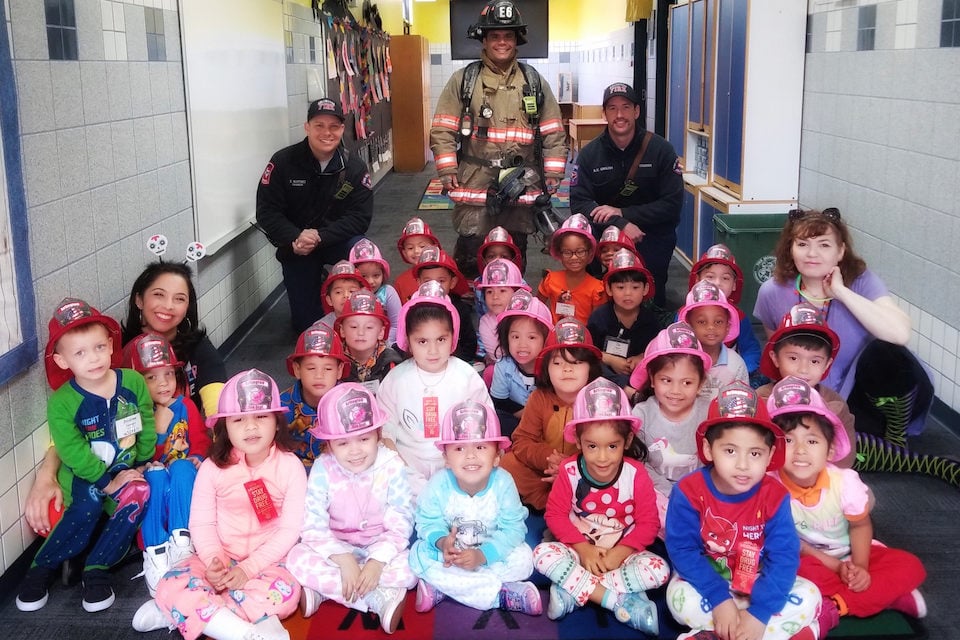
Bilingual Pre-K Delivers English and Spanish Instruction
Where can a four-year-old learn to read and write in Spanish while also learning English and having a lot of fun? The Arlington ISD’s bilingual Pre-K program, offered at 25 elementary schools.
“In Arlington ISD we embrace and respect other cultures and celebrate diversity,” said Dr. Jackeline Orsini, Arlington ISD director of early childhood learning. “Our early childhood department is committed to meet the educational needs of each student whose native language is not English through our bilingual and ESL Pre-K programs.”
But what is bilingual Pre-K? Many people understandably confuse the bilingual program with ESL Pre-K. Both programs serve students whose first language is not English, but they are not the same.
Pre-K Students and Teachers are Bilingual
In ESL classrooms, students speak any number of languages, so the teacher instructs only in English. In a bilingual classroom, the students are Spanish speakers. Teachers speak both Spanish and English and teach in both languages.
“The Pre-K bilingual program connects directly to your child’s language and experiences, incorporated in a rich and rigorous bilingual curriculum,” said Dr. Hildelisa Díaz, Arlington ISD early childhood learning coordinator. “It is a high-quality program that respects and draws on the language and culture of your child to further the linguistic, social and academic growth.”
The bilingual Pre-K curriculum is identical to all other Arlington ISD Pre-K programs, but literature and social studies are taught in Spanish, and math and science are taught in English – all by the same teacher. During a typical day, the teacher will use books and songs to help transition from one language to the other. As a Spanish speaker, the teacher can offer support to the students when they struggle with English.
“The students are going to learn to read and write in Spanish,” said Nadia Azari, a bilingual Pre-K teacher for the last 17 years at Morton Elementary and now an instructional specialist in the early childhood learning department.
Fluency is the Goal of Pre-K
The goal is to slowly add more and more English so that students become fluent and can eventually transition out of the bilingual program, usually later in elementary.
“That starts from day one,” said Azari, about incorporating English into the curriculum. “Sometimes the students feel intimidated because they don’t understand what the teacher is saying, but that’s where the Spanish support comes in.”
“In the beginning of the year, I used a lot more Spanish because the students feel more intimidated,” said Nynyve Sanchez, a bilingual Pre-K teacher at Crow Leadership Academy. “So, I would just say things in English and repeat it back in Spanish so they understood. It didn’t take long. Within weeks they felt comfortable and would say, ‘I can speak a lot of English now.’”
By the end of the year, the students make tremendous progress in English while also learning Spanish and growing in confidence.
A major reason for the growth is something all Arlington ISD Pre-K programs have in common – passionate teachers devoted to their students.
“Our highly-qualified and amazing Pre-K teachers help second language learners explore, discover, analyze and learn through fun hands-on activities in a warm and loving environment,” Orsini said.
Azari and Sanchez are two great examples.
“I never thought I’d be in Pre-K this long, but I loved it,” Azari said.
Sanchez just finished her first year as a Pre-K teacher at Crow, but she has eight years in the Arlington ISD, including four years as a bilingual sixth-grade teacher.
“I’m not leaving Pre-K now for sure,” she said. “This is where I’m going to retire. This is it.”
Pre-K registration is open now. Register today.
